Table of Contents
Introduction:
Forget dusty tomes and crumbling monuments! History whispers its most vibrant secrets not in stone, but in the very fabric of our lives: clothes, tapestries, flags. Join us as we unravel the extraordinary story of civilization, thread by thread. From emperors draped in luxury silks to revolutionaries waving defiant pennants, textiles have shaped cultures, sparked wars, and fueled global trade. Prepare to be tangled in a journey through the textile world, where every weave, every dye, reveals a fascinating tale of how cloth stitched together the tapestry of humanity.
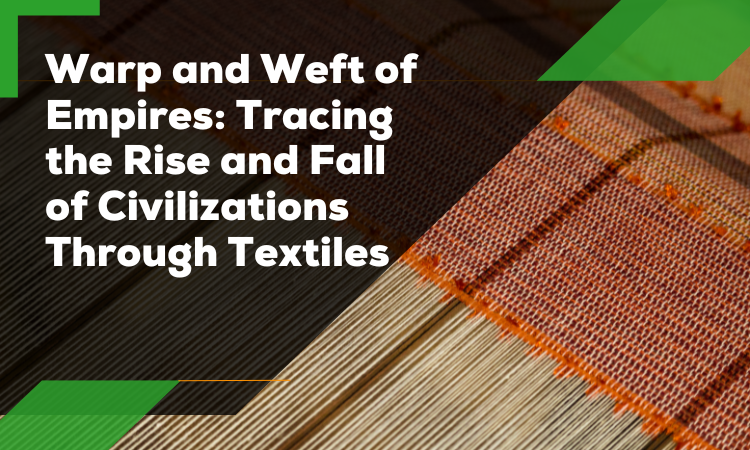
1. Warp and Weft of Empires: Tracing the Rise and Fall of Civilizations Through Textiles
Imagine empires not as towering marble edifices, but as vast tapestries woven from threads of linen, silk, and wool. Within the intricate patterns and vibrant dyes lie the forgotten narratives of their rise and fall, whispered not in the crumbling stones of palaces, but in the faded hues of royal robes and the tattered remnants of soldiers’ tunics.
Take ancient Egypt, where pharaohs adorned themselves in shimmering linen, a fabric born from the fertile Nile delta, a symbol of their divine power and earthly wealth. Linen trade routes flowed like arteries, enriching the empire and weaving Egypt into the fabric of the Mediterranean world. Yet, just as a moth can unravel a tapestry, the rise of cotton and the shift in trade winds slowly frayed Egypt’s dominance, leaving behind echoes in the bleached bones of abandoned linen workshops.
Across the globe, in the bustling markets of Imperial China, silk, “the thread of heaven,” shimmered and whispered luxury. Its intricate patterns showcased not just wealth, but technological prowess, a testament to the meticulous silk production that fueled China’s economic might. This silken web bound nations in trade, entangled ambassadors in diplomacy, and ultimately, like a tangled skein, choked itself as rebellions and overproduction unraveled the empire’s golden threads.
From the vibrant wool tapestries of Viking longships to the sturdy cotton armors of Mayan warriors, textiles not only reflected, but actively shaped the destiny of empires. They fueled economies, ignited conflicts, and adorned both victors and vanquished. As we trace the rise and fall of civilizations through the lens of the textile world, we gain a deeper understanding of the intricate forces that weave the tapestry of history, where empires rise and fall like threads tugged and released on a grand loom.
This is just the first stitch in our exploration of how the textile world mirrored and shaped the warp and weft of empires. Stay tuned as we delve deeper into the intricate patterns of history, woven not in stone, but in the enduring magic of cloth.
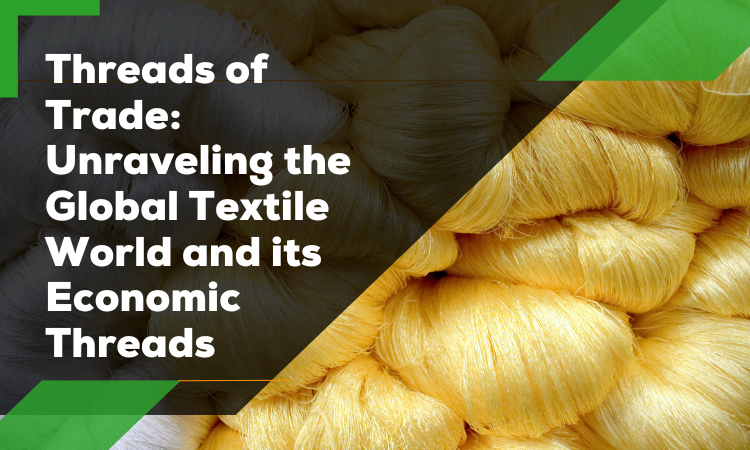
2. Threads of Trade: Unraveling the Global Textile World and its Economic Threads
Imagine a world before container ships and air cargo, yet trade routes thrummed with life. Caravans laden with vibrant silks traversed arid deserts, ships bulging with bales of cotton crossed vast oceans, and humble peddlers hawked their wares in bustling marketplaces. This global tapestry was woven with a single thread: textiles.
From the opulent silk robes of Chinese emperors bartered across the Silk Road to the sturdy woolen cloaks traded by Viking merchants, textiles were more than mere garments; they were currency, commodities, and catalysts for cultural exchange. The rise and fall of empires were often mirrored in the ebb and flow of these “Threads of Trade.”
Cotton, once cultivated in the Indus Valley, became the fabric of empires, its cultivation and trade enriching nations like ancient Egypt and later, the British Empire. Linen from fertile Nile mud and wool from hardy sheep wove their way into economies, fueling prosperity and fueling rivalries. The discovery of new dyes, like the Tyrian purple reserved for Roman emperors, sparked technological advancements and fueled lucrative monopolies.
But this intricate tapestry wasn’t without its dark threads. The insatiable demand for textiles led to brutal exploitation, from the forced labor in colonial cotton plantations to the harsh conditions endured by weavers in early industrial Britain. The fight for fair trade and ethical production remains tangled in the fabric of the modern textile world, a reminder that the threads of prosperity are often interwoven with the knots of injustice.
As we unravel the history of global trade, the textile world provides a vibrant thread to follow. It’s a story of innovation and exploitation, of cultural exchange and human struggle. It’s a reminder that the clothes we wear whisper not just of fashion, but of the complex, interconnected web that binds us all together.
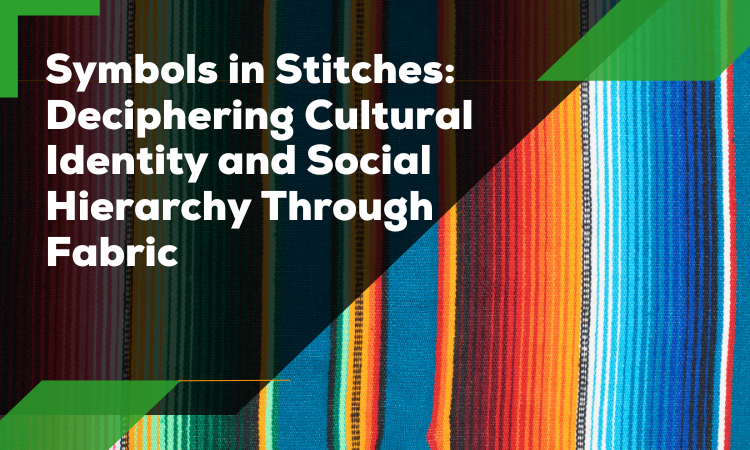
3. Symbols in Stitches: Deciphering Cultural Identity and Social Hierarchy Through Fabric
Imagine stepping into a bustling marketplace, not just one filled with goods, but one alive with stories woven into the very fabric of clothing. From the intricate patterns adorning a kimono to the vibrant stripes on a Maasai blanket, textiles become a kaleidoscope of cultural identity, whispering tales of lineage, tradition, and social standing.
Every stitch, every dye, becomes a symbol. The bold geometric patterns on an African mudcloth speak of resilience and community, while the delicate embroidery on a Chinese cheongsam whispers of grace and refinement. For nomadic cultures, intricately woven rugs become maps, their knotted corners and vibrant colors charting journeys and ancestry.
In ancient societies, the fabric of your garment wasn’t just a matter of style; it was a badge of honor, a declaration of status. The shimmering linen of Egyptian pharaohs spoke of divine power, while the coarser wool tunics of commoners reflected their place in the social hierarchy. In Japan, the intricate silk kimonos worn by noblewomen were testaments to their wealth and artistic heritage.
But fabrics also challenged these rigid structures. Slaves in the American South encoded messages of freedom and rebellion into their quilts, their hidden patterns a secret language of escape. Women throughout history defied social norms by choosing fabrics and styles that defied expectations, weaving threads of protest into their wardrobes.
As the world becomes increasingly interconnected, the “Symbols in Stitches” become more complex. Cultural fusion creates vibrant tapestries, blending motifs and techniques, challenging and reinventing old narratives. Yet, the basic principle remains: textiles remain a powerful language, speaking volumes about who we are, where we come from, and where we hope to go.
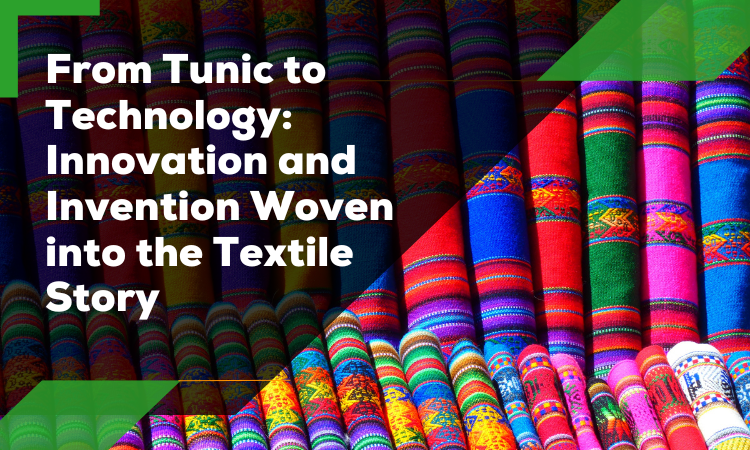
4. From Tunic to Technology: Innovation and Invention Woven into the Textile Story
Imagine a world before smartphones, where the most cutting-edge technology resided not in silicon chips, but in the humble loom. From the first threads spun from flax by our ancient ancestors to the self-cleaning fabrics of today, the textile world has been a cradle of innovation, weaving a fascinating narrative of ingenuity and invention.
Early civilizations laid the groundwork. Egyptians mastered the art of linen production, its strength and flexibility shaping sails for conquering ships and shrouds for mummification rituals. The Chinese perfected silk production, its beauty and durability sparking trade empires and inspiring the invention of sophisticated dyeing techniques. The spinning jenny, a seemingly simple contraption, revolutionized the textile industry, automating yarn production and paving the way for the Industrial Revolution.
But innovation wasn’t limited to production. Textiles became laboratories for scientific breakthroughs. The discovery of waterproof coatings on wool led to the development of rubber raincoats. Dyes derived from plants and insects like cochineal became the foundation for modern synthetic dyes, coloring not just fabrics, but dreams and scientific theories.
Today, the textile world pushes the boundaries of technology further than ever. Smart fabrics embedded with sensors monitor our health, react to changing environments, and even generate electricity. Nano-engineered fibers promise fabrics that are self-cleaning, stain-resistant, and even bulletproof. 3D printing technology allows for the creation of customized garments, blurring the lines between fashion and wearable technology.
The journey from simple tunics to high-tech fabrics is a testament to the unwavering human spirit of innovation. It’s a story woven not just on looms, but in the laboratories of scientists, the studios of designers, and the dreams of those who dared to imagine a future where threads hold the key to progress.
So next time you slip on a shirt or admire a vibrant tapestry, remember: you’re wearing not just fabric, but an intricate chronicle of human ingenuity, woven into the very fabric of our civilization. Join us next time as we explore the cutting edge of textile technology, where threads promise to not just clothe us, but to reshape the world around us.
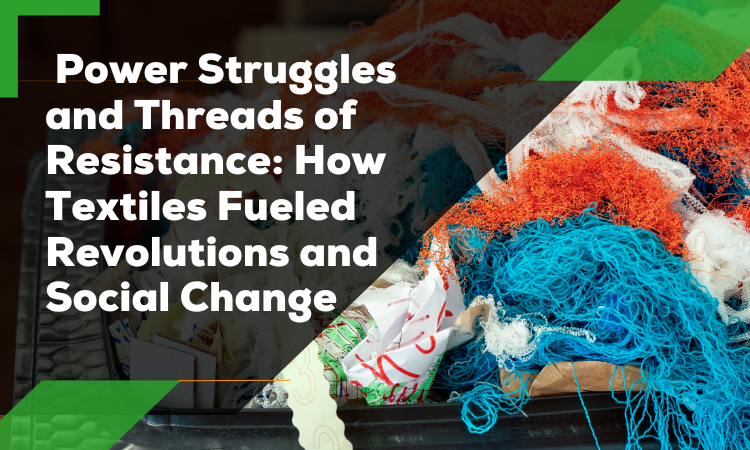
5. Power Struggles and Threads of Resistance: How Textiles Fueled Revolutions and Social Change
Imagine a battlefield not littered with guns and bombs, but with banners held high, their vibrant colors and defiant symbols proclaiming not just loyalty, but a fight for a new fabric of society. Throughout history, textiles have been more than mere garments; they have become weapons, flags, and tools for resistance, woven into the very tapestry of social change.
In ancient Rome, the donning of a specific toga could signal a political stance, a silent protest against an emperor’s tyranny. In medieval India, women defied restrictive caste-based dress codes, adopting sarees of forbidden colors or patterns, their defiance woven into the threads of their garments. During the American Revolution, colonists proudly sported homespun clothing, severing the threads of fashion that tied them to their British oppressors.
Textiles became even more potent symbols of resistance during the Industrial Revolution. Workers, their lives entangled in the harsh threads of factory life, used scarves and handkerchiefs to identify with each other, their solidarity stitched into their attire. Suffragettes flaunted vibrant purple sashes, demanding the right to vote, their colors echoing the struggle for liberty and equality.
But this story isn’t just about rebellion. Textiles have also woven threads of empowerment. In African diaspora communities, intricately patterned fabrics like kente cloths became symbols of cultural identity and pride, worn during celebrations and protests alike. The vibrant sarees of Indian women continue to hold stories of resilience and tradition, passed down through generations.
Today, the fight for fair labor practices in the textile industry continues, with activists and consumers using their wallets and wardrobes to challenge unethical production practices. Sustainable fashion movements champion fabrics woven with ecological conscience, redefining the power dynamics within the global textile supply chain.
From battlefields to boardrooms, textiles remain powerful tools for challenging existing power structures and weaving a new fabric of society. They remind us that our clothes are not just what we wear, but stories we tell, threads of resistance whispering their tales of struggle and hope.
6. Threads of Faith: Exploring the Intertwining of Religion and Textile Traditions
In the intricate tapestry of the textile world, the profound connection between religion and textile traditions weaves a narrative that goes beyond the mere fabric of civilization. “The Fabric of Civilization: How Textiles Made the World” delves into the historical significance of textiles, but when it comes to matters of faith, the interplay becomes even more intricate.
Religious textiles have played a pivotal role in shaping cultural identities and spiritual expressions across civilizations. From elaborate ceremonial garments to sacred tapestries, these threads of faith tell stories of devotion, cultural richness, and divine connection. “The Fabric of Civilization” not only encapsulates the utilitarian aspects of textiles but also the spiritual and symbolic dimensions embedded in religious textile traditions.
The historical exploration in “The Fabric of Civilization: How Textiles Made the World” takes us on a journey through time, revealing the threads of faith that have been woven into the very fabric of human existence. Whether it’s the intricate patterns of Islamic textiles, the vibrant hues of Hindu saris, or the solemn simplicity of Christian vestments, each thread carries with it a tapestry of beliefs and traditions.
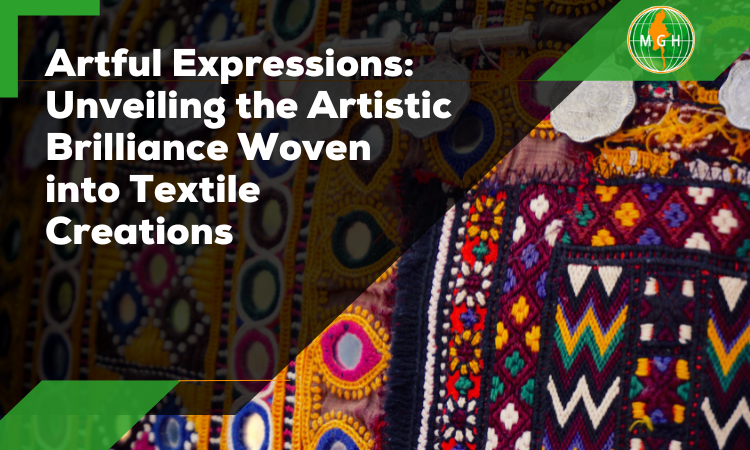
7. Artful Expressions: Unveiling the Artistic Brilliance Woven into Textile Creations
Imagine a canvas not in the sterile confines of a museum, but draped on human forms, swaying in the wind, vibrant with color and texture. This living canvas, this breathtaking tapestry, is the world of textile art, where threads become brushstrokes, looms become easels, and garments transform into expressions of unparalleled beauty and creativity.
From the intricate tapestries of medieval Europe, depicting biblical scenes and courtly life, to the vibrant kimono adorned with delicate floral motifs, textiles have long served as artistic mediums. The Incas weaved intricate stories into their quipus, knotting messages and legends into colorful cords. Berber women in North Africa tell tales of community and tradition through elaborate rug patterns, each knot and dye a whisper of their heritage.
Textile art transcends geographic boundaries. Japanese silk paintings shimmer with ethereal landscapes, their gossamer threads capturing the elusive essence of nature. The bold geometric patterns of African mudcloths pulsate with life, celebrating resilience and community through vibrant shapes and textures. Even humble quilts, stitched together from scraps of everyday life, become masterpieces of storytelling, each patch whispering of lived experiences and familial bonds.
But textile art isn’t merely a relic of the past. Contemporary artists push the boundaries of the medium, transforming humble fabric into sculptures, installations, and wearable performances. Yarn bombing dresses up the urban landscape, yarn installations breathe life into sterile spaces, and fiber optic threads weave dazzling constellations of light.
Textile art reminds us that beauty and creativity can be found in the most unexpected places, born not from expensive pigments and polished canvases, but from the humble thread, the patient loom, and the skilled hand. It’s a story woven not just on fabrics, but in the hearts and minds of those who dare to transform the practical into the sublime.
8. Beyond Utility: The Sensual and Symbolic Power of Textiles Through Time
In the vast expanse of the textile world, the significance of textiles transcends mere utility, encompassing a rich tapestry of sensual and symbolic power that has woven itself through the fabric of civilization. “The Fabric of Civilization: How Textiles Made the World” offers a compelling journey through time, unveiling the profound impact of textiles beyond their practical applications.
As we navigate the pages of “The Fabric of Civilization,” we discover that textiles, beyond their functional role, have always held a unique place in human history. From the earliest fibers spun for warmth and protection to the intricate tapestries that adorned royal courts, textiles have been conduits for expressing culture, identity, and the human experience.
The sensual allure of textiles lies not only in their tactile nature but also in the stories they tell. Consider the exquisite craftsmanship of a Persian rug, the delicate embroidery of a traditional Chinese silk garment, or the vibrant patterns of African textiles. These elements evoke a sensory experience that transcends the practical and delves into the realms of aesthetics and emotion.
Symbolism, too, weaves itself into the very threads of our history. The regal robes of monarchs, the sacred vestments of religious leaders, or the intricate patterns of indigenous textiles—all carry layers of meaning and cultural significance. “The Fabric of Civilization” unravels the symbolic power woven into textiles, reflecting societal values, beliefs, and aspirations.
Through time, textiles have been more than commodities; they have been storytellers, reflecting the evolution of societies and civilizations. In the intricate dance of threads, we find echoes of human creativity, resilience, and ingenuity. “The Fabric of Civilization: How Textiles Made the World” serves as a guide, revealing how textiles have not only shaped the physical world but also the intangible realms of culture, art, and identity.
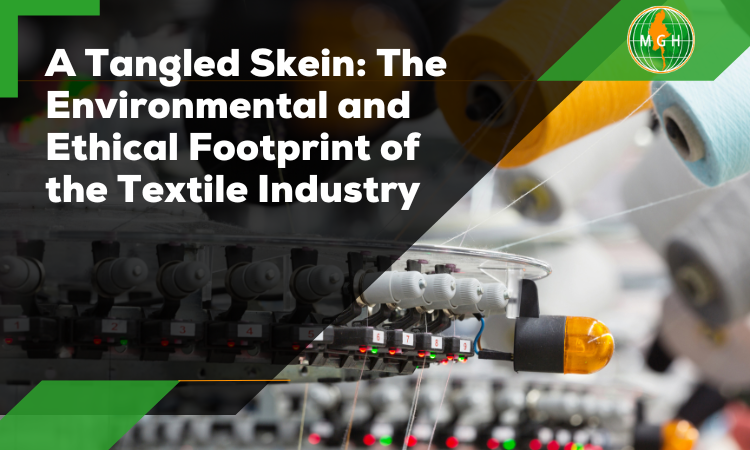
9. A Tangled Skein: The Environmental and Ethical Footprint of the Textile Industry
Imagine the vibrant tapestry of the textile world, its threads woven from cotton, silk, and polyester, all gleaming with beauty and innovation. But behind this dazzling facade lies a tangled skein – the environmental and ethical footprint of the industry, a dark undercurrent threatening to unravel the entire fabric of our civilization.
The sheer scale of the textile industry is staggering. Producing the clothes we wear consumes more water than any other industry, pollutes rivers with toxic dyes, and releases mountains of synthetic fibers into the environment, microplastics that find their way into our oceans and food chain. Cotton farming depletes fertile land and guzzles water, while the production of synthetic fabrics like polyester relies on fossil fuels and generates harmful emissions.
Beyond the environmental scars, the human cost is equally worrisome. From child labor in cotton fields to sweatshop conditions in factories, the pursuit of cheap clothing often comes at the expense of human dignity and safety. Workers toil for long hours in hazardous conditions, exposed to toxic chemicals and unfair treatment.
But amidst this tangled skein of challenges, whispers of hope can be heard. Sustainable clothing brands are emerging, embracing organic materials, responsible production practices, and fair labor standards. Consumers are becoming more conscious, demanding transparency and ethical sourcing of their clothes. Governments are enacting regulations and promoting eco-friendly initiatives.
The path towards a cleaner and fairer textile industry is complex, but not impossible. It requires a collective effort from consumers, manufacturers, and policymakers. We must embrace slow fashion, repairing and reusing clothes instead of chasing trends. We must demand transparency and ethical sourcing from the brands we support. We must push for stricter regulations and hold all players accountable.
Untangling the skein of the textile industry will not be easy. It will require awareness, responsibility, and a conscious shift in our relationship with clothing. But by weaving together environmental sustainability, ethical labor practices, and innovative solutions, we can reimagine the fabric of our civilization, ensuring that the vibrant tapestry of the textile world becomes a source of pride, not a symbol of exploitation.
10. Threads of Tomorrow: Weaving a Sustainable and Equitable Future for the Textile World
In envisioning the textile world of tomorrow, the imperative lies not only in acknowledging the rich history encapsulated in “The Fabric of Civilization: How Textiles Made the World” but also in charting a course toward a sustainable and equitable future. The threads of tomorrow weave a narrative that transcends the fabric of civilization, embracing ethical practices and environmental consciousness.
As we reflect on the insights provided by “The Fabric of Civilization,” it becomes evident that the textile industry, with its vast impact on the environment and communities, is at a crossroads. The future demands a paradigm shift—one that champions sustainability, ethical production, and social responsibility.
Sustainable practices are emerging as the cornerstone of the textile world’s evolution. From eco-friendly materials to responsible manufacturing processes, the shift toward sustainability reflects a commitment to minimizing environmental impact. “The Fabric of Civilization” serves as a catalyst for change, inspiring a reevaluation of how textiles are produced and consumed in the modern era.
Equity in the textile world extends beyond environmental concerns to encompass fair labor practices and social responsibility. “The Fabric of Civilization: How Textiles Made the World” prompts us to consider the human cost behind our garments and textiles, urging the industry and consumers alike to support fair wages, safe working conditions, and the empowerment of communities involved in textile production.\
In the threads of tomorrow, technology also plays a pivotal role. Innovations in textile manufacturing, such as sustainable dyeing processes and circular fashion initiatives, promise a more environmentally friendly and resource-efficient future. “The Fabric of Civilization” invites us to embrace these technological advancements as catalysts for positive change in the textile industry.
Conclusion:
Our journey through the textile world may end here, but the narrative it woven into the fabric of civilization stretches to infinity. From humble threads, empires rose and fell, revolutions sparked, and art blossomed. Remember, clothes aren’t merely garments; they’re whispers of history, threads of progress, and vibrant tapestries waiting to be unraveled. So, the next time you hold a piece of cloth, remember: you’re not just touching fabric, you’re touching the very pulse of humanity. Keep exploring, keep unraveling, and see the world anew, woven thread by thread.



